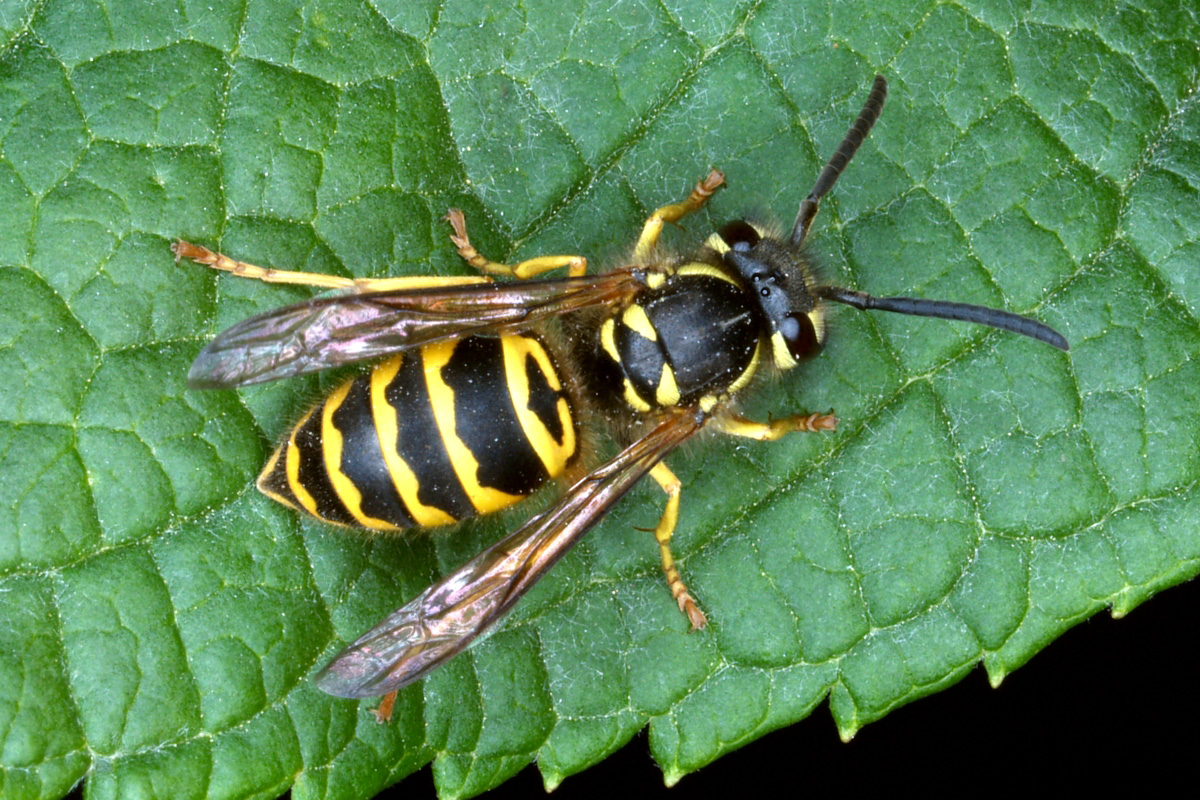
By Jody Green, Extension Educator, Douglas/Sarpy County
Wasps are beneficial insect predators and biocontrol agents of many insect and arthropod pests, but during the summer months, some species have the potential to be an urban pest.
IDENTIFICATION OF SOCIAL WASPS
Social wasps such as paper wasps and yellow jackets, live in large colonies, compared to solitary wasps, which live and forage alone. Bees can be distinguished from wasps by their fuzzy appearance and their diet consists of nectar, pollen and water. Wasps appear hard and shiny with less hair, wings are folded into a narrow strip over the abdomen while at rest and legs dangle as they fly.
PEST STATUS OF WASPS
Wasps become nuisances when nests are constructed in locations where humans frequent. Only females are capable of stinging and most stings occur when they are stepped on, touched or in defense mode. Some people are hypersensitive to wasp venom, and stings can lead to life-threatening anaphylactic shock. It is advised to seek medical treatment if severe reaction occurs.
NESTING TYPE AND LOCATION
The queen overwinters in protective sites, and emerges when the weather warms up. She begins to search for a suitable location to begin construction of her nest. She builds cells using papery pulp made from chewed up wood fibers mixed with saliva, and lays a single egg in each cell. She forages for food during the day, feeding larvae pre-chewed insects. Adult wasps feed on sugary substances such as nectar, plant sap and rotting fruits.
The nest of a paper wasp is a single-layer of downward-facing, exposed cells, resembling an umbrella. These nests are constructed under any horizontal surface, including overhangs of buildings, beams, furniture and limbs. The European paper wasp can also nest in small cavities, such as hollow posts of outdoor furniture, appliances and light fixtures. A yellow jacket nest consists of a series of round combs stacked in tiers, covered in an envelope and are located underground in abandoned rodent burrows, as aerial nests or in wall voids.
AVOID ATTRACTING WASPS
Many wasps are scavengers and will forage on a wide variety of foods we consume. The best way to prevent wasps is to keep food covered, dispose of trash in a covered container and remove rotting fruit from trees.
FINDING AND TREATING THE NEST
The best time to find the nest is during the day, but the best time to treat is after dark when temperatures are cooler and all foragers retreat to the nest. Wear protective clothing that covers the body, face and hands completely, and if using a flashlight, cover beam with red cellophane. If you find a nest in your wall void, do not seal the entry hole!
Pest management companies can eliminate wasp nests if located in difficult areas and locations. They have specialized equipment and insecticidal dust to complete the job during the day. There are many products labeled for wasps and intended for homeowner use. Synthetic pyrethroids such as cyfluthrin, prallethrin and deltamethrin offer quick knockdown in ready-to-use formulations that can be sprayed as far away as 15–20 feet. It is best to treat now while colonies are below peak population numbers and aggressive behavior is not yet evident. Come late summer, adult wasps will be plentiful and respond aggressively when competing for sources of sugar (i.e. your watermelon, popsicle, fruit juices and pop).
If you can avoid the nest and it’s not bothering anyone, leave the nest alone. The colony will die after the first hard freeze.